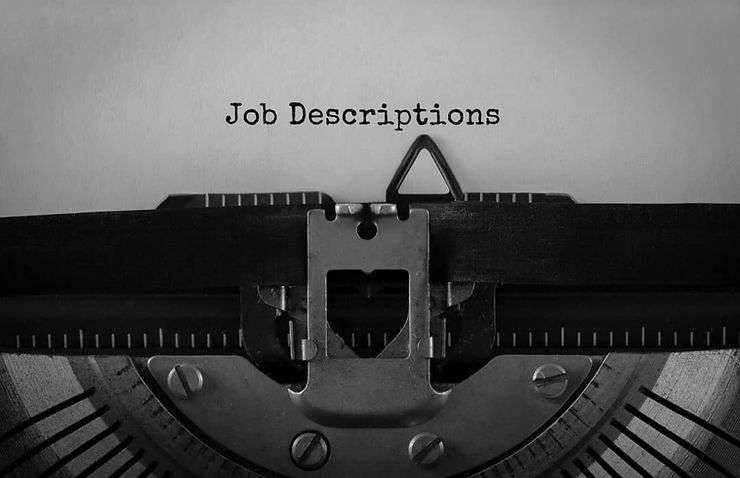In the realm of talent acquisition and management, clarity is key. “Creating Clarity: Professional Job Description Templates for Effective Communication” serves as an invaluable guide for employers seeking to streamline the recruitment process and foster a clear dialog with prospective employees. Professional job description templates promote an unambiguous understanding of roles and responsibilities, setting the stage for harmonious employer-employee relationships.
These templates not only simplify the process of conveying job expectations but also ensure that the prospective employees are well-equipped with the necessary information to perform effectively. As you navigate through this guide, you’ll familiarize yourself with the elements of a well-structured job description and learn how to customize templates to meet your specific needs.
The Role of a Professional Job Description Template

The role of a professional job description template is multifaceted and profoundly influential in the creation of clear and effective job descriptions. At its core, a professional job description template serves as a blueprint for painting an accurate and comprehensive picture of a job role. It offers a structured format to present essential information such as key responsibilities, necessary qualifications, and performance expectations.
An aptly designed template ensures uniformity and consistency across all job descriptions within an organization, thereby eliminating the likelihood of misunderstanding or ambiguity. Moreover, it optimizes communication efficiency by helping hiring managers convey expectations succinctly and prospective employees understand the role thoroughly.
Job description templates also play an instrumental role in aligning a role’s specifics with the organization’s goals and values. They enable recruiters to showcase the company culture and work environment, thereby attracting candidates who resonate with the organization’s ethos. In essence, professional job description templates are a vital tool for effective communication, setting clear expectations, and fostering a transparent hiring process.
Unlocking Clarity with Job Description Templates

The use of professional job description templates is a fundamental strategy for unlocking clarity in the job recruitment process. These templates serve as a standardized format, streamlining the process of crafting clear, precise, and comprehensive job descriptions. They provide a consistent structure, ensuring that every job description within an organization contains the same essential components. This uniformity helps avoid confusion or misunderstanding, offering a fully transparent view of the job’s requirements and expectations.
Moreover, job description templates save time and effort for hiring managers. Instead of starting from scratch each time, they can simply modify the template to suit the specifics of each role. They can easily reiterate the key responsibilities, necessary qualifications, and performance expectations, making it easy for potential candidates to quickly understand what the job entails.
In essence, job description templates are an efficient tool to create clear, concise, and uniform job descriptions. They contribute significantly to the overall effectiveness of the recruitment process, ensuring that both employers and prospective employees are on the same page right from the start.
Crafting a Comprehensive Job Description

Crafting a comprehensive job description using a professional template involves several critical steps. First and foremost, it begins with a Job Title. The title should be precise, clear, and reflective of the nature of the job.
The Job Summary follows next, which provides a brief overview of the role, its purpose, and how it contributes to the organization’s goals. A well-crafted job summary also includes details about the work environment and team structure.
Afterward, the Key Responsibilities section outlines the core duties and tasks that the role involves. Using bullet points for this section can make it easier to read and digest.
Next comes the Qualifications and Skills section. Here, you should list the necessary educational qualifications, technical skills, and experience required for the job.
The Performance Expectations section should highlight what success looks like in the role. It should ideally set measurable targets or objectives that align with the company’s broader goals.
Lastly, the Company Culture and Benefits section allows employers to portray the organizational culture and highlight benefits like health insurance, retirement plans, or professional development opportunities that make the company attractive to potential candidates.
In summary, a comprehensive job description crafted with a professional template provides a clear, organized, and detailed overview of the job, facilitating an effective recruitment process.
Why Clear Job Descriptions Matter

Clear and precise job descriptions play a pivotal role in the hiring process and ongoing employee performance. For starters, they set up the foundation for effective talent acquisition. With an unambiguous job description, recruiters can better match candidates to positions, ensuring the role aligns with their skill set, experience, and career goals. This not only streamlines the recruitment process but also increases the likelihood of job satisfaction and longevity in the role.
Furthermore, clear job descriptions are instrumental in fostering effective performance management. They provide a benchmark against which managers can evaluate employee performance and employees can gauge their progress. This transparency in expectations empowers employees to strive for excellence in their roles, contributing to the overall productivity and success of the organization.
Finally, well-structured job descriptions play a critical role in legal and compliance contexts. They provide a reference point for determining fair compensation, reasonable accommodation for disabilities, and defending recruitment decisions if they are ever questioned. In essence, clear job descriptions are not just a useful tool, but a crucial component of effective, fair, and transparent business operations.
Mastering the Art of Writing Job Descriptions
Mastering the art of writing job descriptions requires an understanding of the role, a clear communication style, and a well-designed template. A job description is more than just a list of duties; it’s a snapshot of the role within the larger organizational context that needs to resonate with potential candidates. Hence, striking the right tone is essential. Ensure the language is engaging, inclusive, and reflects your company’s culture and values.
Professional job description templates are invaluable assets in this process. They provide a structured format that guides you through the crucial elements of the job description, ensuring consistency and clarity. The sections – Job Title, Job Summary, Key Responsibilities, Qualifications and Skills, Performance Expectations, and Company Culture and Benefits – are designed to capture the scope of the role comprehensively.
When writing the job description, be specific and concise, avoiding jargon or ambiguous phrases. For example, when outlining Key Responsibilities, use action verbs and clearly state the expectations. Be explicit about the necessary qualifications and skills, specifying the level of experience and type of qualifications required.
Performance expectations should be measurable and realistic, giving potential candidates a clear idea of what success in the role looks like. The section on company culture and benefits is your opportunity to sell your organization. Use it to highlight what sets your company apart and why candidates should choose you.
In summary, mastering the art of writing job descriptions is a balance of clear communication, a detailed understanding of the role, and effective use of job description templates. Achieving this balance is key to attracting, hiring, and retaining the right talent for your organization.
Choosing the Right Job Title
Creating a good job description involves choosing the right job title that accurately reflects the specific job responsibilities and duties. The job title should align with industry standards and be easily recognizable and searchable for qualified applicants. A well-written job description sets clear expectations from the start and attracts the right talent. It also plays a significant role in defining job roles, identifying career progression routes, and determining appropriate compensation. Investing time and thought into crafting a winning job description is vital for successful job postings and attracting qualified candidates.
Customizing Job Descriptions for Specific Roles
Customizing job descriptions for specific roles in the organization is a key step in effective recruitment and employee management. This ensures that the job description accurately reflects the unique requirements of each position, capturing the specific skills, experiences, and responsibilities that differentiate one role from another.
Job description templates are an invaluable tool in this process. They provide a basic structure that can be tailored to suit any role, ensuring that all crucial elements are included. However, the content within these sections must be carefully adapted to reflect the specifics of the role at hand. For instance, the Key Responsibilities of a Marketing Manager will differ significantly from those of a Software Engineer, as will the Qualifications and Skills required.
Begin by understanding the role thoroughly, and consulting with relevant stakeholders such as department heads or team leads. Next, translate this understanding into the job description, being specific and detailed. Avoid generic phrases that could apply to any position. Instead, use precise language that clearly communicates what this particular role entails, and what skills and experiences are required.
Furthermore, the Performance Expectations section should reflect realistic and measurable targets specific to the role. For a sales position, this could mean a certain amount of revenue generation, while for a content writer, it might pertain to the number of articles produced or the engagement rate on their pieces.
Remember, the Company Culture and Benefits section should also be tailored to resonate with potential candidates for the role. Highlight benefits or aspects of the company culture that would be particularly appealing to individuals in this position.
In essence, while job description templates provide a valuable structure, they are just a starting point. It’s the customization of these templates to suit specific roles that truly makes a job description effective. By doing so, you increase the likelihood of attracting qualified candidates who are well-suited to the role and your organization.
At Mosh JD, we understand that crafting exceptional job descriptions is not just a necessity, but an opportunity to enhance the hiring process, ensure fair pay, and unlock the full potential of your workforce. It’s a chance to communicate your organization’s vision, expectations, and culture to prospective candidates.
Ready to elevate your job descriptions and transform your recruitment process? Connect with us today and let’s embark on this journey together. Creating clarity within your organization starts with a single step. Take that step now, because your workforce’s full potential awaits.





